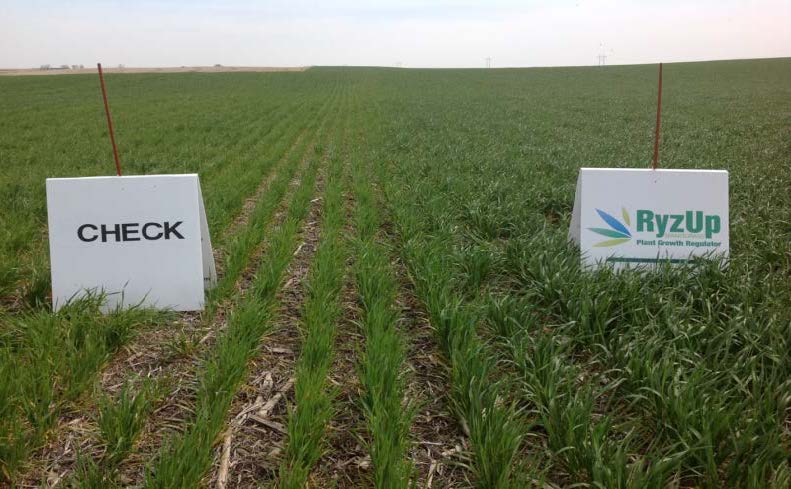

WINTER IS ALMOST OVER! SOON, YOUR WINTER WHEAT CROP WILL BE GREENING UP AGAIN…
How can you put your crop in the best position to take off quickly on the way to maximum yield? You likely have a few things you do each season to make that happen.
I’ll share a few more you may consider adding to your repertoire this spring.
FERTILIZER
The biggest topic surrounding wheat greenup is often nitrogen fertilizer — how much should be put on, when should it be applied, what’s the best way to do it?
First, evaluate your stand and your potential. Next, soil test to see how much N is present. Then, make your plan. Regardless of how you apply your N, getting it into the soil and ultimately into the plant is key, and takes moisture to make that happen. Use a nitrogen stabilizer and consider adding sulfur or humic acid to the mix to try to minimize loss. Adding a micronutrient blend and some sulfur along with the N can be a big boost to tiller development and early growth.
Keep in mind that head size is determined around Feekes 5, so getting the nitrogen and other nutrients into the plant at Feekes 3 to 4 is crucial.
NATURALS
Wheat is very responsive to several of the natural products we’ve tested. Our two-year data on Boost 10 (an amino acid product) has shown great results. Last year, it was a 9.6-to-1 return on investment (ROI). Heat Shield has shown a 4:1 ROI at greenup, which is amazing, as well! Heat Shield contains beneficial fungal endophytes that help increase wheat tolerance to temperature and moisture stress, which is almost certain to come during the growing season. We also encourage you to try MegaGro foliar and Cereal NS+ seed treatment, which combines Heat Shield & Nutri-Cycle. The ROI is JUST SO GOOD on some of these natural products in wheat – including the four I just listed – that using them is some of the easiest money you can make on the farm.
One other natural product to consider is RyzUp SmartGrass (gibberellic acid).
Gibberellic acid helps with stem elongation and will lead to a faster growth rate and a taller plant, despite cool weather in spring. This can get you to canopy a little quicker, but it also leads to a stronger overall stalk and less lodging. We have not seen it increase yield in our experience, but a better early start and a quicker canopy to catch more sunlight energy and smother late-emerging weeds is a real plus.

FUNGICIDE
Early season disease pressure is almost always there. Think about it — you have cooler conditions, and any moisture you get usually hangs around for a while. Plus, you have a crop coming out of winter dormancy that has gone through some stress, making it that much easier for a crop to “catch a cold”.
There are many great fungicides for use early at herbicide timing, but my favorite for the money has been the half rate of Nexicor. Three modes of action for less than the price of one bushel of wheat provides a really great ROI and often noticeably helps plant health versus untreated.
INSECTICIDE
Make sure you look for insects before you apply naturals or crop protection products!
An inexpensive (often less than $3/acre) insecticide could catch a free ride in the tank with almost anything else you’re going to put out in the field. Watch closely for aphids and other early-season insects. Even a low level of feeding can really set a crop back this early in the season.
SCOUTING/TESTING
Finally, now is the time to get a plan together and commit to regular scouting this season. At each step of the season, note the growth stage of your crop and make plans as to what you can do at each of those stages. If this is the year you’d like to get started with plant tissue testing or in-season nitrogen/nutrient monitoring, get everything you will need (sample bags, probe, sweep net, etc.) on hand now so you’re all set. Once you have your crop off to the fastest and best start ever, there’s a lot of incentive to keep it going all year! Good luck!
